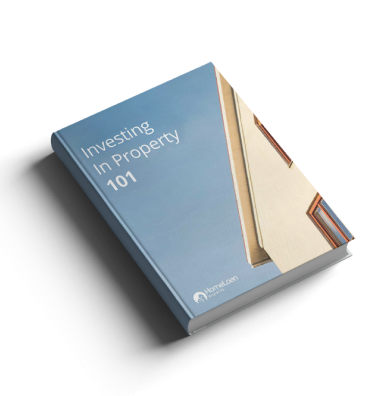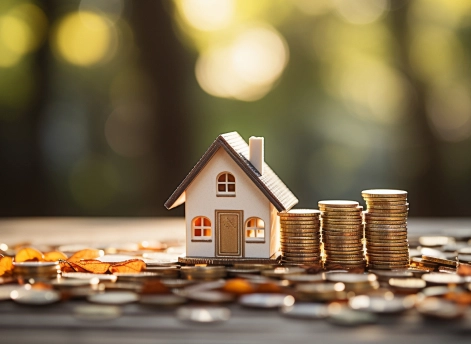Understanding Australia’s property market cycle is crucial for investors and home buyers. The property market moves through four distinct phases: boom, slump, stagnation and upturn, which are influenced by factors such as demand, supply, interest rates, and population growth. The cycle typically spans 18.5 years and each phase offers unique opportunities.
Investors often capitalise during the slump or early upturn, when prices are favourable. Home buyers can benefit from government schemes or low interest rates. Recognising where a suburb sits in the cycle can guide decisions, helping you make strategic moves in this recurring pattern of market activity.
What Is The Property Market Cycle?
It is a series of phases a property market goes through in a repeated pattern. It revolves around two factors: demand and supply. The Australian cycle has four phases, each with different characteristics.
The cycle starts with a boom, when prices and demand are high, amidst limited supply. The boom is followed by a slump, which happens due to an oversupply of properties in the market. Property prices fall and demand is low. As prices start to level off or even start falling, there are very few buyers in the market; this is the stagnation phase. Slowly, the property market starts recovering and more investors and buyers start entering the market, which is the upturn phase.
Property Investment Guide 101
Learn the ins & outs of investing in properties from an experienced property investor and founder of Home Loan Experts, Otto Dargan.

The Phases Of The Property Market Cycle
The property cycle goes through its four distinct phases in the following order:
1. The Boom Phase
The boom phase is usually the shortest phase in the property cycle. During a boom, property prices rise rapidly due to high demand amidst low supply. Properties sell for more than the asking price due to the limited supply. This is a seller’s market. Eager home buyers and investors start entering the market during a boom because of the fear of missing out.
For investors already in the market, it’s a great time to sell, as property values are increasing.
| Start of the boom | Mid boom | End of the boom |
|---|---|---|
| There are more buyers than sellers Real-estate agents look for listings Interest rates are low Tradespeople increase their hourly rates | nvestors are blamed for rising prices Fear of missing out kicks in among buyers Inexperienced investors try to enter the market Media reports amazing sales | Foreign investors are blamed for pushing up prices Real-estate agents are overwhelmed The RBA increases the cash rate There are calls to tighten credit High prices and interest rates price out buyers |
2. The Slump Phase
The excess of property supply brings the boom to an end. Property prices stop increasing and plateau, and can sometimes decline. Due to the overexuberant building activity, there is an oversupply of property. The slump is usually the longest phase of the cycle. If the boom phase is long, it is followed by a deeper and longer slump.
It’s during a slump that experienced investors find opportunities to buy in the best suburbs.
| Start of the slump | Mid slump | End of the slump |
|---|---|---|
| Projects are often not completed It is cheaper to rent than buy Fear of unemployment increases There are redundancies in the building industry | Foreclosures start increasing Developers sell stock at discounted rates Auction rates are low, as people opt for private sales Limited stock enters the market There are more sellers than buyers | Inexperienced investors begin to sell their stock The media reports on hard-luck stories People do not take on credit and are afraid to make financial commitments Interest rates are reduced to stimulate demand Government offers incentives to stimulate demand |
3. The Stagnation Phase
Now, the property market begins to stabilise and stagnate. The stagnation phase is between peak and correction, when the market is stable. People regain their confidence and investors start returning to the market.
| Start of stagnation | Mid stagnation | Final stage of stagnation |
|---|---|---|
| Rental yields are low The number of sales falls as buyers are not present Auction clearance rates drop Low stock absorption rates (more stock in the market than what is bought) | Developers start discounting unsold stock Prices fall Real-estate agents become responsive again | Negative media reports die down Prices pick up Buyers and investors slowly enter the market |
4. The Upturn Phase
As confidence grows and activity returns, the market goes through an upturn. More properties are listed for sale and buyers get FOMO and start buying. This accelerates the rate of price rises.
It’s during the upturn that investors find the best opportunities, especially during the start of the recovery phase, as demand for property is slowly increasing.
| Early stages of an upturn | Mid upturn | End of upturn |
|---|---|---|
| Rents start rising due to shortage or properties (that was caused in the slump stage) Vacancy rates start to drop Auction clearance rates start increasing Investors become more active | The prices of building materials increase More construction work commences The cost of construction increases | Foreclosures taper off Demand will slowly exceed supply A seller’s market emerges Vendor discounts are reduced Property prices slowly start rising |
There is no end to the cycle, as it will start afresh with the end of the last phase. This is why time in the market is more important than timing the market. Once you know the signs that show which phase of the property cycle you are in, you can gauge which areas are ripe for growth and when sellers are motivated to sell to you.
What Influences The Property Cycle?
There are many factors that influence the property cycle:
- Government policies:If the government announces schemes that favour first home buyers, there will be an influx of demand from this cohort. The government attempts to do this to try to avoid a downturn.
- Unemployment rate: People need jobs to get approved for a home loan. If unemployment rates are too high, consumer confidence will be low and people will save rather than spending money or taking out loans. High levels of unemployment bring about the slump phase. Having a stable job encourages spending.
- Interest rates: During growth, or upturn, phase, interest rates are usually low, money is cheap, fuelling demand. Interest rates are kept low to boost the economy, and keep the Australian dollar in check to encourage imports and overseas investment.
- Population growth: This is one of the factors that affectss the level of demand. If there is a growing population and demand, it will put upward pressure on prices.
- Australian dollar: When the dollar is strong, imports are cheaper, which can benefit the construction industry by making materials from overseas, such as Chinese steel, less expensive.
- Foreign investment: Investors from overseas who want to buy property in Australia will keep a close eye on the Australian dollar. If the dollar is lower, property prices are cheaper, which brings overseas buyers into the market. In 2015, the Australian Prudential Regulation Authority stepped in to tighten lending for investors and they withdrew from the market. The tightening measures happened as the boom phase was pricing out home buyers.
- Infrastructure projects and development:Areas that are proposed for development, like train lines and airports, will have investors taking a good look.
How Long Is A Property Cycle?
Australia is not one homogeneous market. Different states and territories are at different stages of the property cycle at different times. So Sydney will experience the stages at a different time, and for different lengths of time, than Brisbane.
On average, a full property cycle can last up to 18.5 years.
- The upturn phase, or the first upswing, takes about seven years.
- Slowdown, or stagnation, lasts about a year.
- Then comes the boom, which is the second upswing; this can last about seven years as well.
- Finally, after enjoying a peak, the market typically slumps down for about four years.
When Is The Right Time To Buy?
You can use the cycle to analyse where property is now and determine if there’s going to be an upswing or downturn.
For property investors
- A boom is not always the best place to start. Look at when markets are stable and poised for growth. This way, you enter the market when prices are more affordable and can sell when there’s a boom.
- When there is a boom, you can use the equity from existing property to grow your investment portfolio
- Take note of early market upswings, not just peaks.
- Waiting for prices to cool down will take time. Investing in property is a relatively low-risk bet, as land is scarce and demand for it will continue to grow.
For home buyers
- The government might announce various schemes and benefits before a downturn, as a buoy for the property market.
- When mortgage interest rates are low, it might be a good time to start saving for a home deposit and entering the market.
- If you already own property, you can use the equity during the boom to pay off your student loans, car loans or other debts.
- Competition is rife during a boom, when prices are high. Make sure you can afford to repay your home loans without any hardships.
Each suburb goes through the real-estate cycle on its own timetable, with its own demographics, property types and prices. This is why, when you are considering purchasing within a particular suburb, it’s important to know what stage of the property cycle surrounding suburbs are in as well.
At Home Loan Experts, our mortgage brokers are seasoned investors. We know how to navigate the property cycle to determine the best time to invest and the best time to sell. Call us on 1300 889 743 or complete our free assessment form.
